Microstructure and Resistivity Analysis of Silver Nanoparticle-Based Crystalline Conductive Films Synthesized using PEG Surfactant
Abstract
:1. Introduction
2. Experimental Section
2.1. Materials
2.2. Fabrication of Silver Ink and Silver Conductive Films
2.3. Characterizations
3. Results and Discussion
3.1. Thermogravimetric Analysis (TGA)
3.2. Energy Despersive X-ray Spectroscopy (EDS)
3.3. Particle Size Analysis (PSA)
3.4. Field Emission Scanning Electron Microscopy (FESEM)
3.5. Fourier Transformed Infrared Spectrometry (FTIR)
3.6. XRD Analysis
3.7. Physical Properties of Silver Precursor Ink
3.8. Sintering of Silver Films
3.9. Temperature Resistivity Correlation of Silver Films
4. Conclusions
Author Contributions
Funding
Acknowledgments
Conflicts of Interest
References
- Chen, Y.; Au, J.; Kazlas, P.; Ritenour, A.; Gates, H.; McCreary, M. Flexible active matrix electronic ink display. Nature 2003, 423, 136. [Google Scholar] [CrossRef]
- Bairavasubramanian, R.; Thompson, D.; Ponchak, G.E.; Tentzeris, M.M.; Papapolymero-u, J. Liquid crystal polymer (LCP): A new organic material for the development of multilayer dual-frequency/dual-polarization flexible antenna arrays. IEEE Antenn Wirel Pr. 2005, 4, 22–26. [Google Scholar]
- Otte, K.; Makhova, L.; Braun, A.; Konovalov, I. Flexible Cu (In, Ga) Se2 thin-film solar cells for space application. Thin Solid Films 2006, 511, 613–622. [Google Scholar] [CrossRef]
- Baeg, K.J.; Khim, D.; Kim, J.; Yang, B.D.; Kang, M.; Jung, S.W. High-performance top-gated organic field-effect transistor memory using electrets for monolithic printed flexible NAND flash memory. Adv. Funct. Mater. 2012, 22, 2915–2926. [Google Scholar] [CrossRef]
- Wang, J.Z.; Zheng, Z.H.; Li, H.W.; Huck, W.T.S.; Sirringhaus, H. Dewetting of conducting polymer inkjet droplets on filmed surfaces. Nature Mater. 2004, 3, 171–176. [Google Scholar] [CrossRef]
- Huang, X.; Qi, X.; Boey, F.; Zhang, H. Graphene-based composites. Chem. Soc. Rev. 2012, 41, 666–686. [Google Scholar] [CrossRef] [PubMed]
- Mensing, J.P.; Kerdcharoen, T.; Sriprachuabwong, C.; Wisitsoraat, A.; Phokharatkul, D.; Lomas, T. Facile preparation of graphene–metal phthalocyanine hybrid material by electrolytic exfoliation. J. Mater. Chem. 2012, 22, 17094–17099. [Google Scholar] [CrossRef]
- Wu, Y.; Li, Y.; Ong, B.S. Printed silver Ohmic contacts for high-mobility organic thin-film transistors. J. Am. Chem. Soc. 2006, 128, 4202–4203. [Google Scholar] [CrossRef]
- Choi, C.S.; Jo, Y.H.; Kim, M.G.; Lee, H.M. Control of chemical kinetics for sub-10 nm Cu nanoparticles to fabricate highly conductive ink below 150 °C. Nanotechnology 2012, 23, 065601–065609. [Google Scholar] [CrossRef]
- Russo, A.; Ahn, B.Y.; Adams, J.J.; Duoss, E.B.; Bernhard, J.T.; Lewis, J.A. Pen-on-paper flexible electronics. Adv. Mater. 2011, 23, 3426–3430. [Google Scholar] [CrossRef] [PubMed]
- Hösel, M.; Krebs, F.C. Large-scale roll-to-roll photonic sintering of flexo printed silver nanoparticle electrodes. J. Mater. Chem. 2012, 22, 15683–15688. [Google Scholar] [CrossRef]
- Kim, J.; Kang, S.W.; Mun, S.H.; Kang, Y.S. Facile synthesis of copper nanoparticles by ionic liquids and its application to facilitated olefin transport membranes. Ind. Eng. Chem. Res. 2009, 48, 7437–7441. [Google Scholar] [CrossRef]
- Li, Y.; Wu, Y.; Ong, B.S. Facile synthesis of silver nanoparticles useful for fabrication of high-conductivity elements for printed electronics. J. Am. Chem. Soc. 2005, 127, 3266–3267. [Google Scholar] [CrossRef]
- Wu, J.T.; Hsu, S.L.C.; Tsai, M.H.; Hwang, W.S. Direct inkjet printing of silver nitrate/poly (N-vinyl-2-pyrrolidone) inks to fabricate silver conductive lines. J. Phys. Chem. C. 2010, 114, 4659–4662. [Google Scholar] [CrossRef]
- Gamerith, S. Direct ink-jet printing of Ag-Cu nanopartic1e and Ag precursor based electrodes for OFET applications. Adv. Funct. Mater. 2007, 17, 3111–3118. [Google Scholar] [CrossRef]
- Wu, Y.; Li, Y.; Liu, P.; Gardner, S.; Ong, R.S. Studies of gold nanoparticles as precursors to printed conductive features for thin-film transistors. Chem. Mater. 2006, 18, 4627–4632. [Google Scholar] [CrossRef]
- Chou, K.S.; Lai, Y.S. Effect of polyvinyl pyrrolidone molecular weights on the formation of nanosized silver colloids. Mater. Chem. Phys. 2004, 83, 82–88. [Google Scholar] [CrossRef] [Green Version]
- Walker, S.B.; Lewis, J.A. Reactive silver inks for filming high-conductivity features at mild temperatures. J. Am. Chem. Soc. 2012, 134, 1419–1421. [Google Scholar] [CrossRef]
- Rickerby, J.; Simon, A.; Jeynes, C.; Morgan, T.J.; Steinke, J.H.G. 1,1,1,5,5,5-Hexafluoroacetylacetonate copper(I) poly(vinylsiloxane)s as precursors for copper direct-write. Chem. Mater. 2006, 18, 2489–2498. [Google Scholar] [CrossRef]
- Chen, S.; Carroll, D.L. Silver nanoplates: size control in two dimensions and formation mechanisms. J. Phys. Chem. B 2004, 108, 5500–5506. [Google Scholar] [CrossRef]
- Szczech, J.B.; Megaridis, C.M.; Gamota, D.R.; Zhang, J. Fine-Line Conductor Manufacturing Using Drop-On-Demand PZT Printing Technology. IEEE Trans. Electron. Packag. Manuf. 2002, 25, 26–30. [Google Scholar] [CrossRef]
- Adams, J.J.; Duoss, E.B.; Malkowski, T.F.; Motala, M.J.; Ahn, B.Y.; Nuzzo, R.G.; Bernhard, J.T.; Lewis, J.A. Conformal Printing of Electrically Small Antennas on Tree-Dimensional Surfaces. Adv. Mater. 2011, 23, 1335–1340. [Google Scholar] [CrossRef]
- Huang, Q.; Shen, W.; Song, W. Synthesis of colourless silver precursor ink for printing conductive films on silicon nitride substrates. Appl. Surf. Sci. 2012, 258, 7384–7388. [Google Scholar] [CrossRef]
- Lopatina, L.I.; Sergeyev, V.G. The effects of the molecular weight and structure of poly(acrylic acid) on the formation of “blue silver”. Moscow Univ. Chem. Bull. 2010, 65, 331–334. [Google Scholar] [CrossRef]
- Sharmeli, K.; Ahmad, M.B.; Jazayeri, S.D.; Sedaghat, S.; Shabanzadeh, P.; Jahangirian, H.; Mahdavi, M.; Abdollahi, Y. Synthesis and characterization of polyethylene glycol mediated silver nanoparticles by the green method. Int. J. Mol. Sci. 2012, 13, 6639–6650. [Google Scholar] [CrossRef]
- Song, Y.J.; Wang, M.; Zhang, X.-Y.; Wu, J.-Y.; Zhang, T. Investigation on the role of the molecular weight of polyvinyl pyrrolidone in the shape control of high-yield silver nanospheres and nanowires. Nanoscale Res. Lett. 2014, 9, 17–25. [Google Scholar] [CrossRef] [PubMed]
- Dong, H.C.; Yan, W.H. Spontaneous formation of Ag nanoparticles in dimethylacetamide solution of poly(ethylene glycol). J. Colloid Interface Sci. 2002, 255, 299–302. [Google Scholar]
- Longenberger, L.; Mills, G. Formation of metal particles in aqueous solutions by reactions of metal complexes with polymers. J. Phys. Chem. 1995, 99, 475–478. [Google Scholar] [CrossRef]
- Gharibshahi, L.; Saion, E.; Gharibshahi, E.; Shaari, A.H.; Matori, K.A. Structural and optical properties of Ag nanoparticles synthesized by thermal treatment method. Materials 2017, 10, 402. [Google Scholar] [CrossRef] [PubMed]
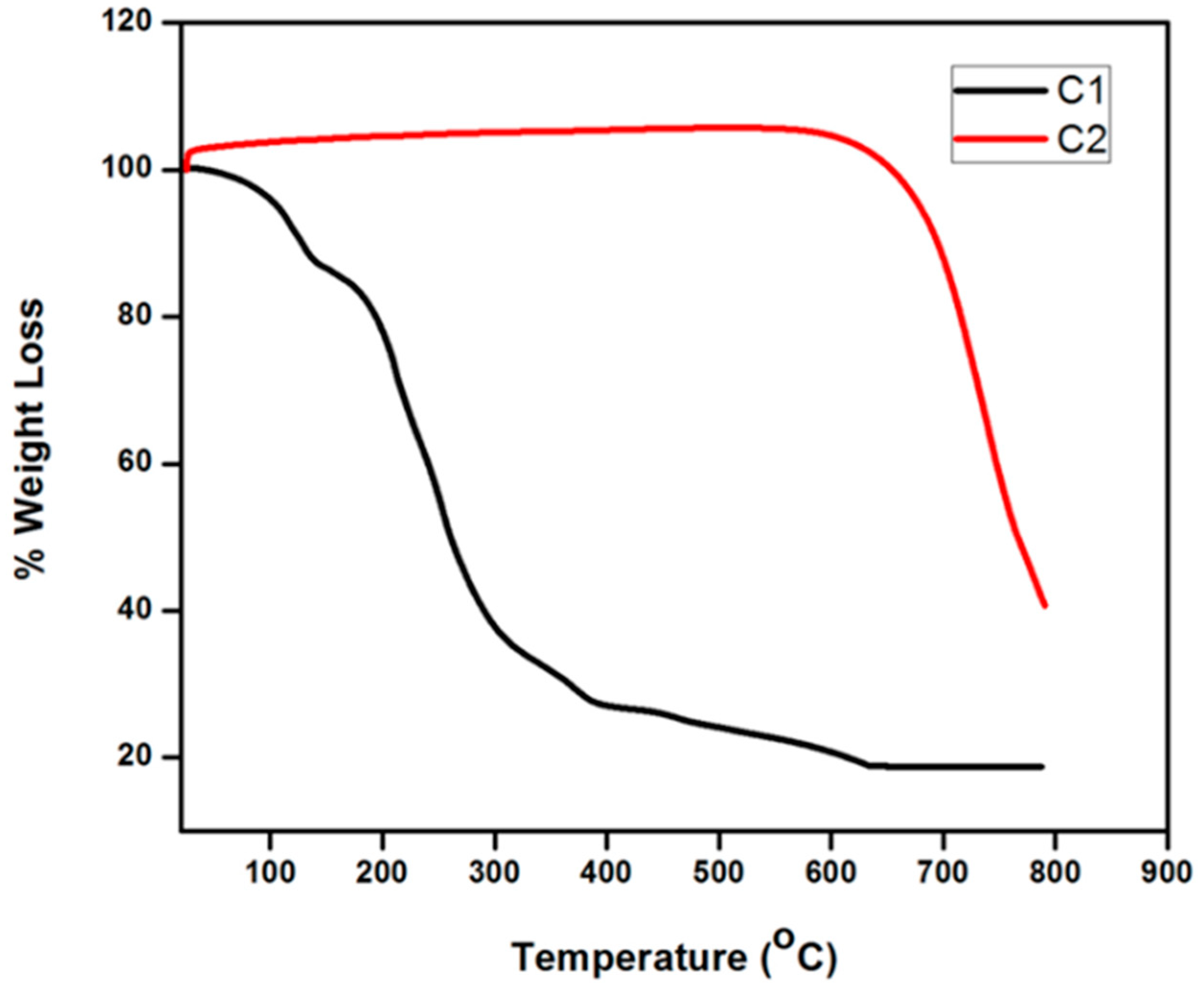



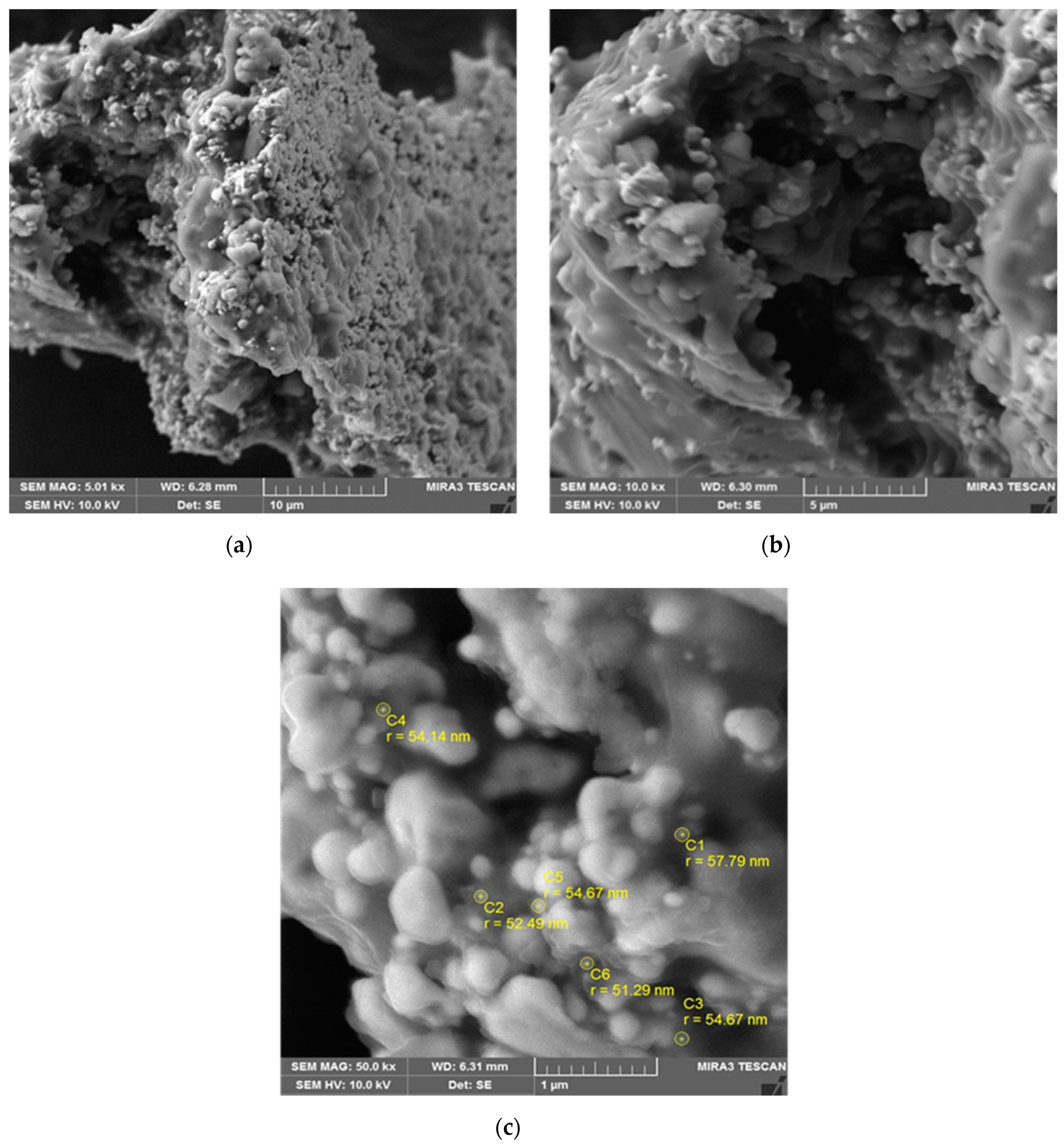
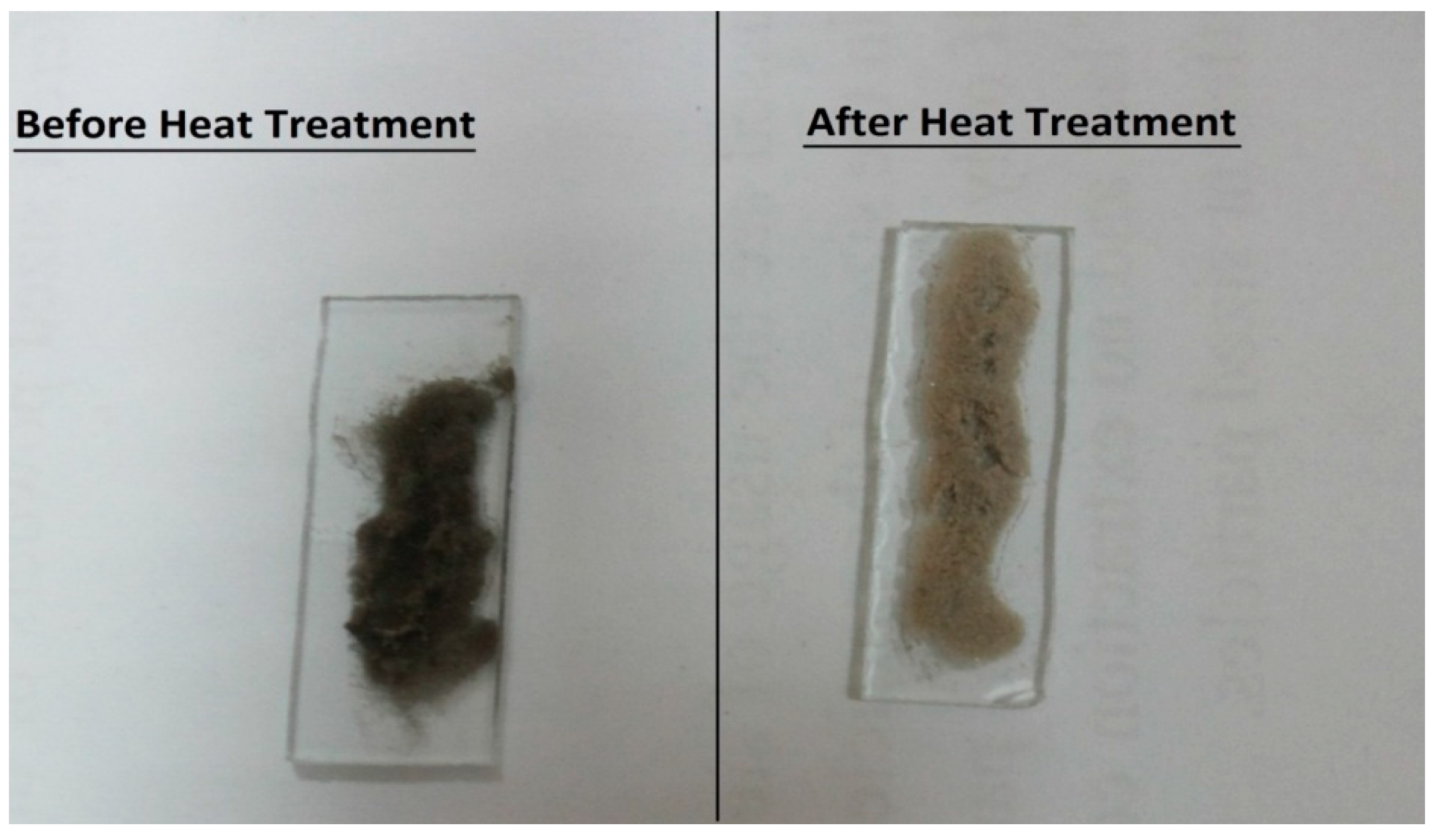
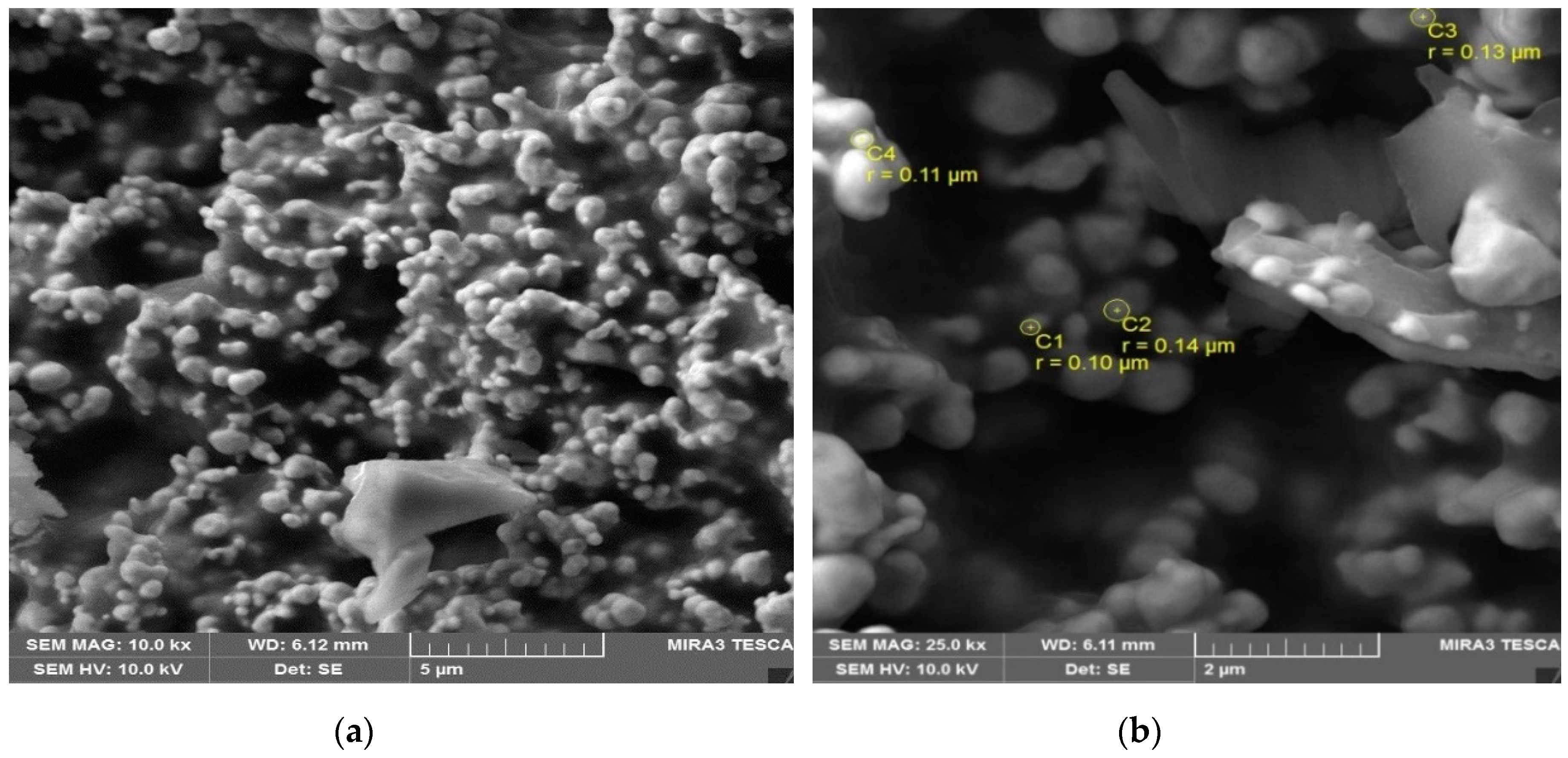
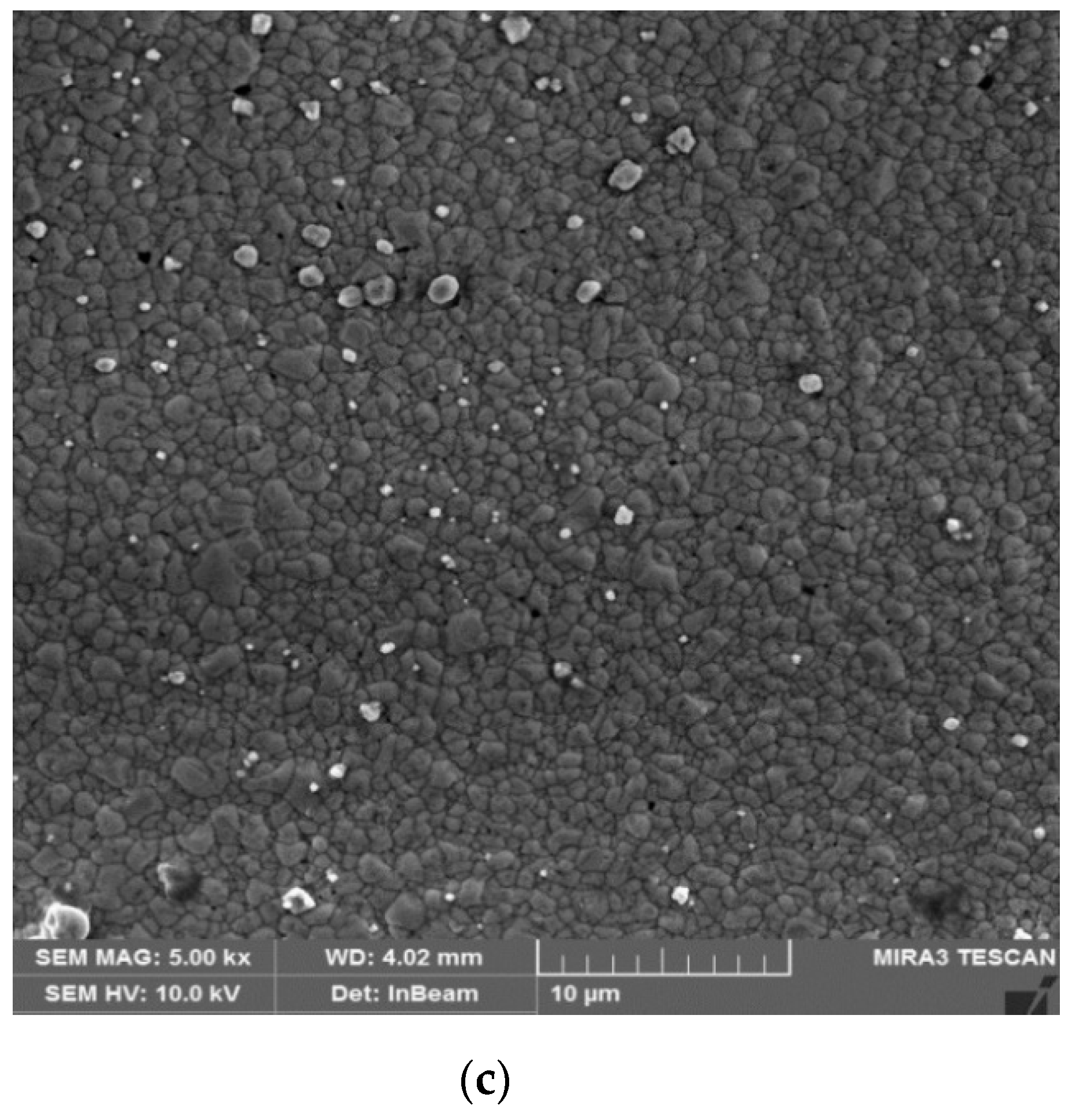
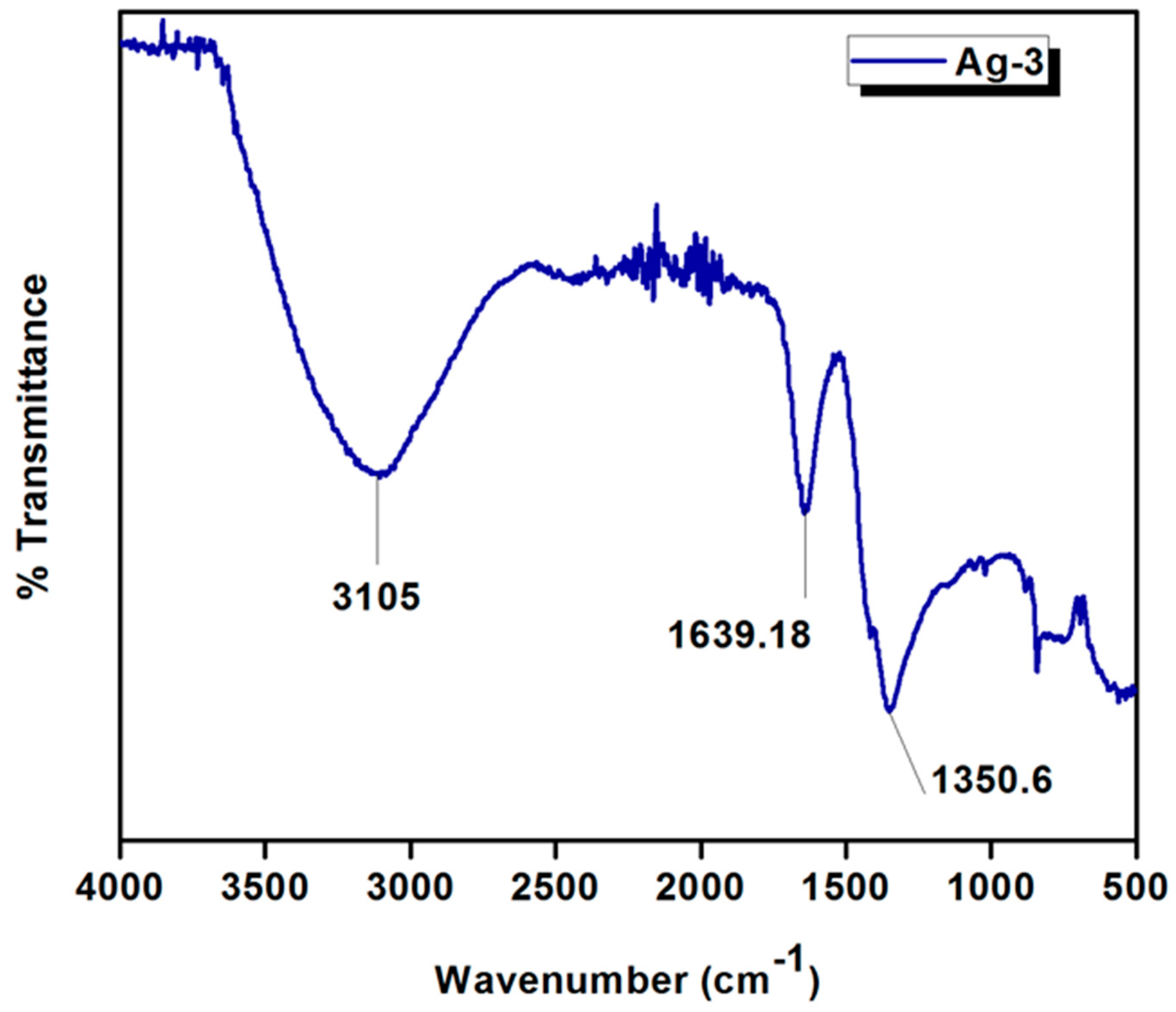



© 2019 by the authors. Licensee MDPI, Basel, Switzerland. This article is an open access article distributed under the terms and conditions of the Creative Commons Attribution (CC BY) license (http://creativecommons.org/licenses/by/4.0/).
Share and Cite
Mustafa, F.; Razwan, M.; Shabbir, S. Microstructure and Resistivity Analysis of Silver Nanoparticle-Based Crystalline Conductive Films Synthesized using PEG Surfactant. Processes 2019, 7, 245. https://doi.org/10.3390/pr7050245
Mustafa F, Razwan M, Shabbir S. Microstructure and Resistivity Analysis of Silver Nanoparticle-Based Crystalline Conductive Films Synthesized using PEG Surfactant. Processes. 2019; 7(5):245. https://doi.org/10.3390/pr7050245
Chicago/Turabian StyleMustafa, Faisal, Muhammad Razwan, and Saima Shabbir. 2019. "Microstructure and Resistivity Analysis of Silver Nanoparticle-Based Crystalline Conductive Films Synthesized using PEG Surfactant" Processes 7, no. 5: 245. https://doi.org/10.3390/pr7050245





